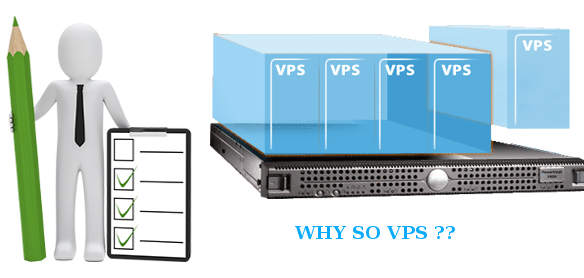
Website will play a key role in building your business and so it is important to improve the same as the business grows. Most of the entrepreneurs prefer to host their websites in basic shared hosting packages, considering the low cost and fully managed services. But as the business grows the number of visits will also grow and the resource of the website will be increased accordingly. Hence normal shared hosting packages would not be suitable enough for handling the higher traffic and resource usage. An isolated environment for hosting is what is required at that level. Hence Virtual Private Servers and Dedicated Servers are recommended. Depending on the type of access most customers prefer VPS packages due to the affordability factor. Compared to shared hosting, VPS also would cost a good amount of money and most hosting providers do not offer any money back guarantee for the isolated environments. Hence it is important to analyze the type of the VPS and its configuration.
The following factors should be considered before proceeding with a VPS purchase:
1) Type of Drive in which the VPS is configured:
VPS are generally offered in Solid State Disk (SSD) based, SAS (Serial Attached SCSI) based and SATA (Serial Advanced Technology Attachment) based drives. SSD based VPS would deliver the best performance as they use the IC chips instead of moving parts for the read/write process. Better data processing also helps in loading the website within seconds.
2) Type of Virtualization:
Generally there are three major types of VPS virtualizations. KVM based, OpenVZ based (Linux containers) and Xen based (Bare Metal Hypervisor). Among them, the Xen and KVM virtualizations are the most preferred. Also, there are provisions to allocate specific amounts of resources to each VPS node. In OpenVZ based VPS, most of the VPS nodes will hardly consume their allocated resources in full and hence large number of VPS nodes can be created using the available resources.
3) Availability of SWAP space:
Swap space is a portion of the hard disk space, which is used for virtual memory. It is helpful in cases where RAM allocated to the hardware node gets exceeded. Here, the SWAP space will act as additional memory for the VPS. Generally, it is available only for VPS packages virtualized using KVM and Xen.
4) Data center location:
The Data center location needs to be considered as a main factor before choosing a VPS. The closer the data center is to the customers, the better will be the loading speed of the VPS.
5) Price and Discounts:
Last but not the least, prices need to be considered. Make sure that comparative quotes are sourced from the leading data center providers to ensure that you get a good hosting package which can boost up the performance of your website with in the budget allocated. Response time and knowledge of the technical staff also need to be considered. The same can be tested through a live chat conversation with the data center themselves.



